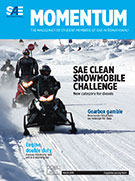Magazine

SAE Vehicle Electrification: Novmeber 12, 2014
2014-11-12
Harley-Davidson's e-bike shocker (video) Is the motorcycle market ready for a Harley-Davidson EV? Project LiveWire was designed to provide answers, said Chief Engineer Jeff Richlen. Airbus has its eye on the future of cleaner flight CleanSky 2 targets are to increase aircraft fuel efficiency enough to reduce CO2 emissions by 20-30% and reduce aircraft NOx and noise emissions by 20-30% compared to newly designed aircraft entering into service in 2014-or essentially halve 2005 CO2 emissions levels by 2050. Soul EV extends the range frontier (video) Specially formulated NCM battery cells are key in giving the vehicle class-leading EV range while enabling engineers to fit a high-energy-density battery pack underfloor with little sacrifice of passenger cabin space.



















